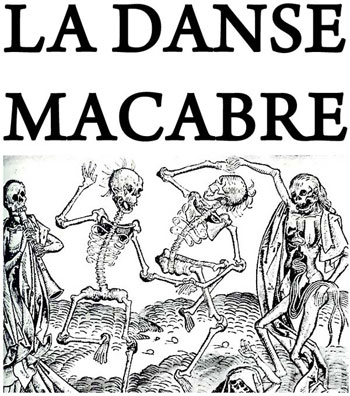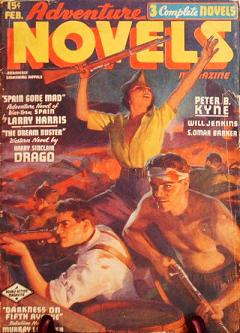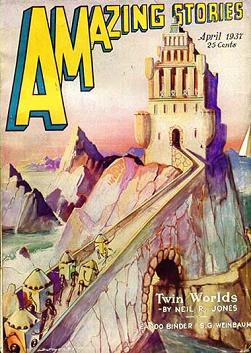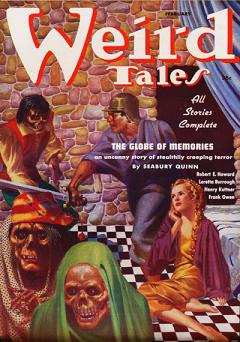
 Columbia Workshop (1936-57) aired “Danse Macabre” on March 21, 1937. Scripted by Helen Bergeron and George Zachary, it shows us Death, in the guise of a vagabond fiddler, stalking the countryside of a kingdom peddling his wares. When people begin dying (symptoms described are those we now know as the Plague, but are never stated), the rabble march to the king demanding something be done. The king, a rather timid, foppish sort, readily takes the counsel of one of his advisors and believes tossing coin of the realm to the angry rabble will calm them. Death has other plans, of course.
Columbia Workshop (1936-57) aired “Danse Macabre” on March 21, 1937. Scripted by Helen Bergeron and George Zachary, it shows us Death, in the guise of a vagabond fiddler, stalking the countryside of a kingdom peddling his wares. When people begin dying (symptoms described are those we now know as the Plague, but are never stated), the rabble march to the king demanding something be done. The king, a rather timid, foppish sort, readily takes the counsel of one of his advisors and believes tossing coin of the realm to the angry rabble will calm them. Death has other plans, of course.
“Danse Macabre” is filled with great lines, some spoken by an innocent little girl wondering where heaven is, and many by Death himself, who comes across as lonely and merely searching for company–if only someone would join him by dancing to his music. Near the end, at one of the Devil’s short monologues/musings he opines that it is not death people fear, but the fear of death that scares them, but that in the end none are able to resist Death’s final tune. Well, all we can offer on this weekend of Passover is that at least one historical source names one such who did, on a certain Sunday.
“The Dance of Death, also variously called Danse Macabre (French), Danza Macabra (Italian and Spanish), Dança da Morte (Portuguese), or Totentanz (German), is a late-medieval allegory on the universality of death: no matter one’s station in life, the dance of death unites all. La Danse Macabre consists of the personified death leading a row of dancing figures from all walks of life to the grave, typically with an emperor, king, youngster, and beautiful girl—all skeletal. They were produced to remind people of the fragility of their lives and how vain were the glories of earthly life.” — from the webpage withfriendship.com.
The atmosphere here is dark and brooding, rife with imagery of graveyards, tombstones, skulls, and bloated corpses. Ahh, the fresh, crisp air of Old Time Radio in the Spring!
(Illustration uppper right by Dewey Guyen from an old engraving.)
Play Time: 29:27
{Still feeling the effects of the Great Depression in early 1937, escape could be found in any number of science fiction, fantasy, adventure, and horror magazines, several of which are shown below. If looked at closely one can spot that Will Jenkins/Murray Leinster has two stories in the February 1937 issue of Adventure Novels. Lower left corner has “Darkness on Fifth Avenue” as by Leinster, and Will Jenkins is named in the upper right. Stanley G. Weinbaum has the cover story in the April 1937 Amazing Stories, as does Seabury Quinn for the February 1937 Weird Tales.}
[Left: Adventure Novels, Feb. 1937 – Center: Amazing Stories, April 1937 – Right: Weird Tales, Feb. 1937]


